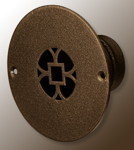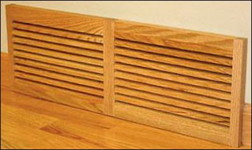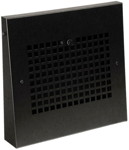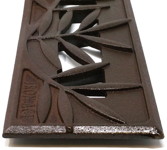click any image below to view our hvac register collections
Craftsman hvac register styles
Generally, a fair amount of craftsman and related style homes built between nineteen hundred and nineteen thirty five had hot water heat as evidenced by the ultra heavy cast iron radiators that just look like a hernia waiting to happen. But there also existed a reasonably large proportion of craftsman style house with hot air heating systems that utilized one form or another of hvac register units which were typically on the floor or wall but could also be found as ceiling vent covers. At the time coat heat was a popular option and coat was typically combusted in a large octopus style furnace with large round arms extending out radially and functioning as the ducting runs culminating at the hvac register. Very importantly, this type of system provided heat through convection in which the hot air would rise up through the ducting to the various rooms. There was not a fan to push the air through the ducts. For this reason the dimensions of the hvac register had to be fairly large in order to provide an adequate number of cubic feet of airflow. But usually in future years the coal stoker was replaced with an oil furnace or a gas furnace, both of which had a fan motor and blower to forcibly send the air through the ducting. At that point it was not necessary to have such large openings to achieve adequate airflow, but the cost and hassle of removing the large original units means that they were simply kept in place. But the takeaway is that if it becomes necessary to reduce the size of the existing openings for whatever reason it is probably going to be possible to avoid a negative affect on system performance.
ceiling vent covers
Ceiling vent covers were typically not used in craftsman and related houses, so if you see any in your house there is an excellent chance they were added later. A common type of heat register found in these houses are the gravity baseboard style, in which you will find ducting located in between the baseboards where part of it has been cut out. Often a portion of the floor has been cut out and so it will be necessary to have a sloping style vent cover to cover up the cut out area. Sometimes cutouts are on the floor only. Sometimes they are on the wall only. Sometimes they are on both. To make matters more complicated the metal ducting is often projecting out of the floor or wall and may or may not be a problem when fitting a new register. For this type of register it is best to take a couple of pictures and call us as they can be very complicated.











































